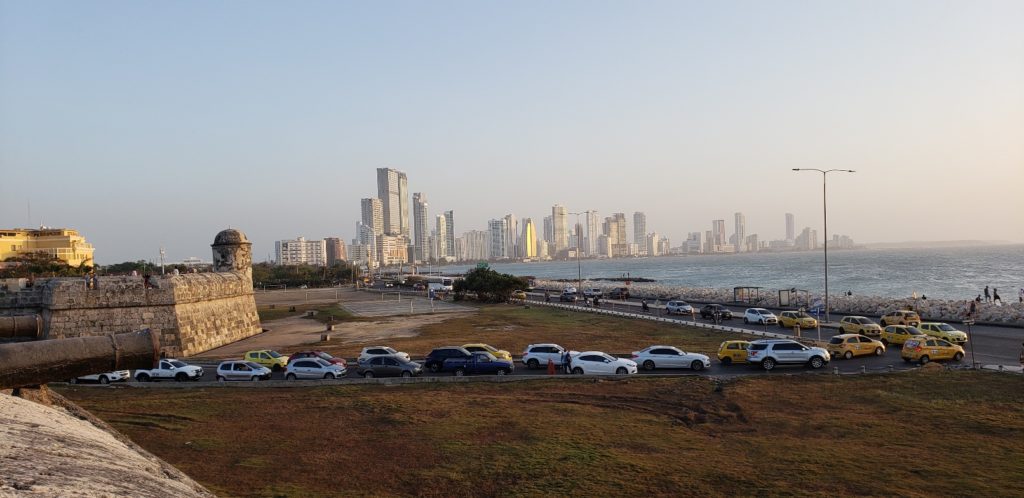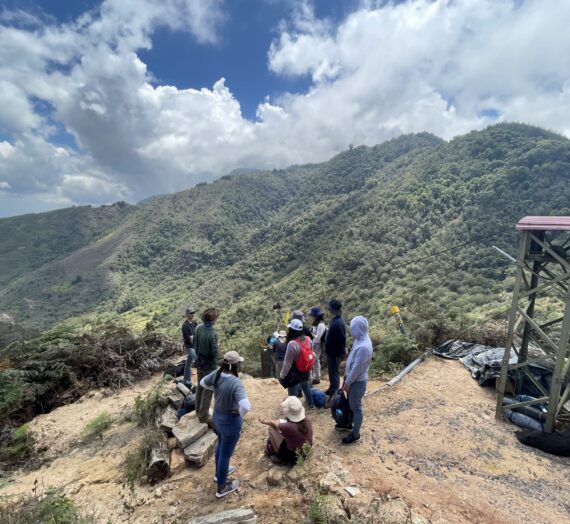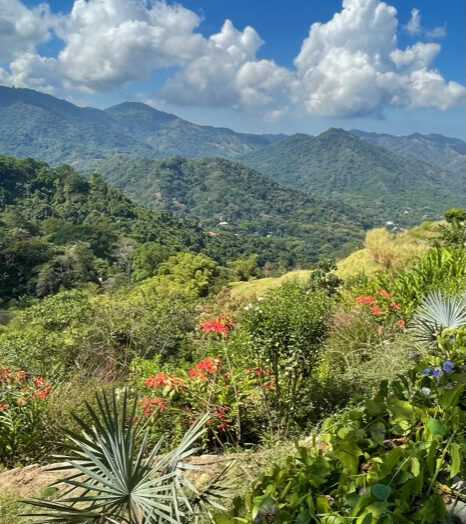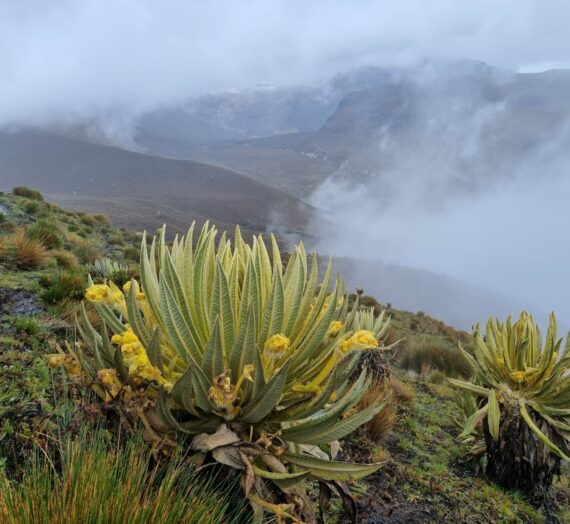
I’ve been working and living in Cartagena for seven months now and I’m saddened to say, it isn’t getting much easier. On the surface, it’s a lovely life and all the photos in my last post are examples of some of the fun memories I’ve been making. But I’m a connector. I want to connect on a deeper level to the people and the places I live. And the harsh reality is that the people of this city are really closed to outsiders. I can’t blame them. Outsiders have been coming to this city for hundreds of years to steal their riches, change their culture, overtake their land, and move them out of the way. Before I even open my mouth and try to practice my Spanish, my face tells them that I’m not from here. This immediately establishes a complicated dynamic. I obviously have a passport, privilege and money to spend; money that they need. Furthermore, experience tells them that tourists don’t care about the sustainability of this community. Tourists don’t want to integrate. Tourists eventually leave. For these reasons, we shouldn’t be trusted, or invited within. After months of this, I feel really isolated.
“Do you like it here?”, the locals ask. I’ve always been bad at poker. I try to tell them what they want to hear, but my face gives me away.


It’s beautiful, I say. That’s partly true. This city is like a bad apple, polished on the outside to a high gloss with fancy buildings all in a row. They like to call it “Little Miami”, and when you’re walking the beachside streets, taking in the little shops and fancy fish restaurants, you can almost believe that this is what Cartagena is all about. In the Historic Center, at about five pm, the golden light angles across the red-tiled roofs and the colorful facades. The glow illuminates the bougainvillea-draped balconies and the horse-carriages clip-clopping on the cobblestones below. It’s magical. And again, you almost believe that this is the heart of Cartagena.


But the core of Cartagena is really sad. It’s the part that tourists and the rich don’t care to see. Just a couple of blocks back from the beach lies the rest of this large city that isn’t colorful and it isn’t white. It is made up of neighborhoods systematically organized into stratas that lock the poorest of the poor into dirty little barrios mostly forgotten by the government. 80% of Cartagena’s population live in these low strata barrios. Some houses only recently got electricity. Some still don’t have running water. Many kids have no access to technology and didn’t have any schooling during the pandemic. And almost all of them are forced to take to the streets to hustle a coin from a tourist. In the upper strata neighborhoods, they bombard the tourists with trinkets for sale. They’ll braid your hair, give you a massage, do a dance, sing for you… anything… for a coin. They’re hungry. It’s really hard to pay everyone. It’s equally hard to look away. It just breaks my heart that this economy is based so much on pleasing and feeding the outsiders, or serving the other 20% of the local population who, by-in-large, don’t seem to care about them either.
When I started to question why this was, I learned that Colombia is one of the most divided countries in the world with a small percentage of uber wealthy (mostly from generational inheritance) and a large population of extremely poor. There is hardly no middle class. And the city of Cartagena is an extreme example of this. I see it out my back door every day. It’s really hard to swallow.
I realize that there is some irony in this because when I lived in the US, I lived in a city where there is a lot of poor and homeless. It’s a big problem. I worked hard to help those communities, but in the end of the day, I could still enjoy the downtown and look away from the ones who slept on the street. I bought into the rhetoric that there were systems in place that were already doing a lot for them…that I was doing enough.
But when you move into a new place, or a new culture, you see it with open eyes. The flaws are glaring and it’s easy to point fingers to a system, a culture, a people, who are obviously doing it wrong. To ward off these feelings, I searched and searched for ways I could be part of the solution; perhaps a way to volunteer to help those in need. But frankly, the only organization I could find to support didn’t fit into my school schedule. So, after several months here, I am deeply entrenched in this cycle of judgement; hating the system that holds these people in their place, and hating the fact that simply because of the color of my skin or where I’m from, I am pigeonholed into a social strata and class that does not allow me access to any “real” Cartagena / Caribbean cultural experience. I live in a white tower of luxury and it has been made clear to me again and again, that I need to shop, eat, and walk where I belong- with the tourists, which by the way, is very expensive.
I guess I just want to live in a community that takes care of their own citizens. And I want to be a part of providing something good for the greater community as well. For me, as it turns out, living the life of the rich and fancy is fun for a while, but it really isn’t my style. Plus, it’s too hot. I just don’t belong here.
So, things change. My contract ended and I decided to leave Cartagena for good.
Now what, I wondered?
For awhile, I’ve been saying that I would like to try to travel, volunteer, write and live as a nomad in South America. But a lot of doubt filled the corners of that statement. Then, the other day I read a meme. It reminded me that the biggest risk I can take is taking the chance that someday I will finally have the time, the energy, the knowledge, the money and the physical body for doing all the things that I’ve waited so long to do. I’m 52 years old. My knees and ankles are starting to give me fits. I have neuropathy in my left hand and floaters in my eyes. Exactly when, I asked myself, do I think I should start this nomadic lifestyle of which I’ve always dreamed?
I guess the time is now.
The biggest risk you can take is taking the chance that someday you will have the time, energy, knowledge, money and physical body to do all the things that you’ve waited so long to do.
How can I travel and write at the same time? How can I use volunteering to finance my travels and connect with people? How can I find places to volunteer and communities with whom to connect? And, how long do I need to stay in one place to find the stories that will drive my blog? I don’t yet know the answers to any of these questions, but I think the Universe just gave me the perfect opportunity to try to figure it all out.


So, once again in my life, I packed up an apartment, gave away and sold the rest of my belongings, and am heading out for at least three months of travel and volunteering around the mountain regions of Colombia. I have my pack, a map and a lot of trust in what is yet to come.
You may think I’m brave. I don’t feel brave. I just feel curious. Where can I go? What can I learn? Who can I meet? And, most importantly, what good can I do for the world?
Am I scared? A little. But for me, living life on the edge of my comfort zone is really where the thrill begins. It’s where I find that I’m most grounded. It’s where I learn new things and meet interesting people. It’s where I find the most hope for the world. And, it’s where I think I am my best self. This is the person I want to be.




So, within my 40-Liter Osprey Travel Pack, my tried and true Old Dawg Day Pack, and my Baggalini Travel Purse, I packed the following for Colombia’s different climates and a variety of adventures on the way:


- 6 short-sleeve shirts (which double as pajamas), two tank tops, 2 long-sleeve
- Wool sweater, down coat, rain coat, hat, gloves, scarf
- Hiking pants, 2 pairs of tights, 1 pair shorts, 1 pair water sport shorts (which double as pajamas), 1 skirt
- Reversible and quick-dry underwear (they last for twice as many days!) and 5 pairs of cotton and wool socks
- Swim suit
- Water/ hiking shoes, sandals, tennis shoes
- Toiletries, including prescription medicine, specialty shampoo, muscle creams, probiotics, resistance bands, an ankle brace, 3 months worth of contact lenses/ solutions, plus glasses, and readers (Hello! I’m not in my 20’s anymore!)
- Computer, phone, power bank, and necessary charging cords
- Pack towel, head lamp, dry bag, cord for hanging laundry or to do pack repairs, first-aid kit, whistle, Colombian map, water bottle and water filter
- Luxuries- camping pillow, yoga mat, travel blanket, and beauty supplies
It’s a lot to carry for three months. It’s really heavy. I wonder what I’ll unload first?
Postscript: The beauty supplies were left behind after the first week!




Dawn Fulps
I admire you for taking a chance on a real adventure! Stay safe my friend & safe travels!
Dana D Harden
Be safe, be wise, and listen to the still, small Voice for guidance – blessings!
Fanny Bretsch
I miss you, I love you and I’m excited to read all about it! Be well friend, safe travels and I wish nothing but peace, inspiration, and exhilarating adventures on your journey.
Edie
I love catching up on your adventures, Becky. Sending you love, well wishes, and many fun adventures ahead.
Martha Sandstead
Enjoy! I am so proud of you for taking this leap! And all the leaps you have taken. Thanks for posting and updating us on all of your adventures. I love this post especially because it is so real. You will have grand adventures but also many disappointments. Yet, you are living life to it’s fullest. Be well dear friend! I can’t wait to read more.
Barb
Go girl! I admire you!
Liz
Praying for you. Will you be with other volunteers? Part of an organization? Please keep in touch. Looking forward to hearing your stories in September. Love ya!
Becky Wandell
Only me… that’s the part of solo travel that makes it such an adventure! But stay tuned for my stories of all the new friends I made along the way!
Lisa
Becky, I love reading your posts and love your adventuresome spirit. Best of luck to you and keep writing because I’ll keep reading!
Lisset margarita Quiñaluisa
BECKY SIEMPRE LISTA PARA OTRA AVENTURA EN TU VIDA
Jeff Morris
Hello:
Ironically, enough my daughter is living in your old apartment in Cartagena. She also got a job at your school teaching 1st grade. She is leaving early because the school really stressed her out. None of the first graders knew English. Her Spanish is remedial at best. Also, she had several students that clearly needed to have a one-on-one para. And to add to her stress, her other first grade teachers did not want to help her. She has no idea why. She is really sad she is leaving. She loved her students.
I am curious as to how your experience was at her school.
Thanks
Becky Wandell
My experience at the school was also interesting. I too was sad to leave my students and that apartment! I wish your daughter all the best in her next adventures.